
The Tangiwai train disaster was a deadly railway accident that occurred at 10:21 p.m. on 24 December 1953, when a railway bridge over the Whangaehu River collapsed beneath an express passenger train at Tangiwai, North Island, New Zealand. The locomotive and the first six carriages derailed into the river, killing 151 people. The subsequent board of inquiry found that the accident was caused by the collapse of the tephra dam holding back nearby Mount Ruapehu's crater lake, creating a rapid mudflow (lahar) in the Whangaehu River, which destroyed one of the bridge piers at Tangiwai only minutes before the train reached the bridge. The volcano itself was not erupting at the time. The disaster remains New Zealand's worst rail accident.

Bert Sutcliffe was a New Zealand Test cricketer. Sutcliffe was a successful left-hand batsman. His batting achievements on tour in England in 1949, which included four fifties and a century in the Tests, earned him the accolade of being one of Wisden's Five Cricketers of the Year. He captained New Zealand in four Tests in the early 1950s, losing three of them and drawing the other. None of Sutcliffe's 42 Tests resulted in a New Zealand victory. In 1949 Sutcliffe was named the inaugural New Zealand Sportsman of the Year, and in 2000 was named as New Zealand champion sportsperson of the decade for the 1940s.
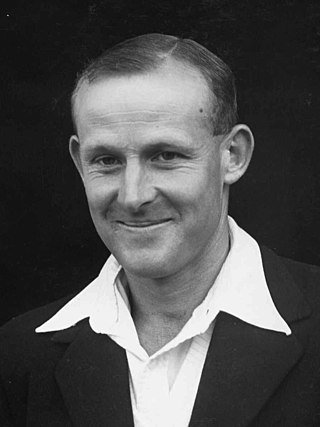
Henry Butler Cave was a New Zealand cricketer who captained New Zealand in nine of his 19 Test matches. His Test career extended from 1949 to 1958, and he played first-class cricket from 1945 to 1959.

Frederick Theodore Badcock was a New Zealand first-class and Test cricketer. Perhaps the best all-rounder in New Zealand in the inter-war period, he played seven Test matches for New Zealand between 1930 and 1933, including New Zealand's inaugural Test in 1930. He was the first players capped by New Zealand.
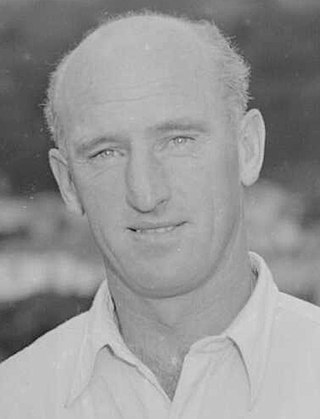
Lawrence Somerville Martin Miller was a cricketer who played 13 matches of Test cricket for New Zealand between 1953 and 1958, and played Plunket Shield cricket for Central Districts and Wellington.

John Gordon Leggat was a New Zealand cricketer who played nine Test matches for New Zealand in the 1950s as an opening batsman. He was later a leading cricket administrator. His cousin Ian Leggat also played Test cricket for New Zealand.

Leslie Watt was a New Zealand cricketer who played one Test match for the New Zealand national team, against England in March 1955. He was born at Waitati in Otago in 1924.
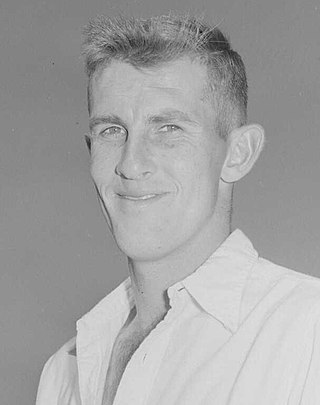
John Chaloner Alabaster was a New Zealand cricketer who played 21 Test matches for the country's national team between 1955 and 1972. A leg-spin bowler, he was the only New Zealander to play in each of the country's first four Test victories. In domestic cricket, he was often partnered at the crease for his provincial side Otago by his younger brother Gren, who bowled off-spin. A schoolteacher, he later served as Rector of Southland Boys' High School in Invercargill.

Robert Smith Cunis played 20 Test matches for New Zealand as a pace bowler between 1964 and 1972, and was later coach of the New Zealand national team from 1987 to 1990. His son Stephen played cricket for Canterbury between 1998 and 2006.
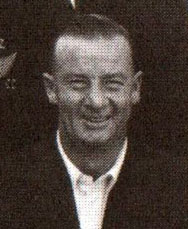
Alexander McKenzie Moir was a New Zealand cricketer. He played 17 Test matches for New Zealand in the 1950s as a leg-spinner and lower-order batsman.
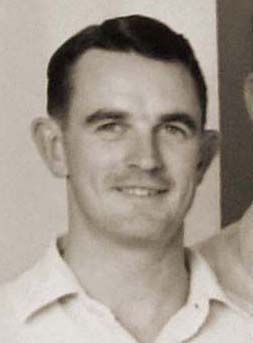
John Edward Francis Beck was a New Zealand cricketer who played in eight Test matches between 1953 and 1956. He played Plunket Shield cricket for Wellington from 1954–55 to 1961–62.
John Trevor Sparling is a former New Zealand cricketer who played in 11 Test matches between 1958 and 1964.
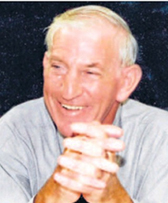
Wynne Pennell Bradburn was a New Zealand cricketer who played in two Test matches against South Africa in 1964.
The New Zealand national cricket team toured South Africa from October 1953 to February 1954 and played a five match Test series against the South Africa national cricket team. South Africa won the Test series 4–0. The tour was the first by a representative New Zealand side to South Africa and the tourists embarked on their visit without having won a Test match since they had been granted full member status of the Imperial Cricket Conference in 1930.
The New Zealand national cricket team toured South Africa from October 1961 to February 1962 and played a five-match Test series against the South Africa national cricket team. The series was drawn 2–2, with New Zealand's victory in the third Test the team's first Test match win outside their home country. New Zealand captain John Reid scored a total of 1,915 runs during the tour, setting a record for the most runs scored in South Africa by a touring batsman. The tour was the second to South Africa by a team from New Zealand, the previous tour having taken place in 1953–54.
This article describes the history of New Zealand cricket from the 1945–46 season until 1970.
This article describes the history of New Zealand cricket from the 1970–71 season until 2000.
William Smith Haig was a New Zealand cricketer. He played 31 first-class matches, almost all of them for Otago between the 1949–50 and 1957–58.
The South Africa cricket team toured New Zealand in February 2024 to play two Test matches. The Test matches formed part of 2023–2025 ICC World Test Championship.

The Tangiwai Shield is a Test cricket series played between the men's cricket teams of New Zealand and South Africa. It was launched in February 2024 during South Africa's tour of New Zealand.













